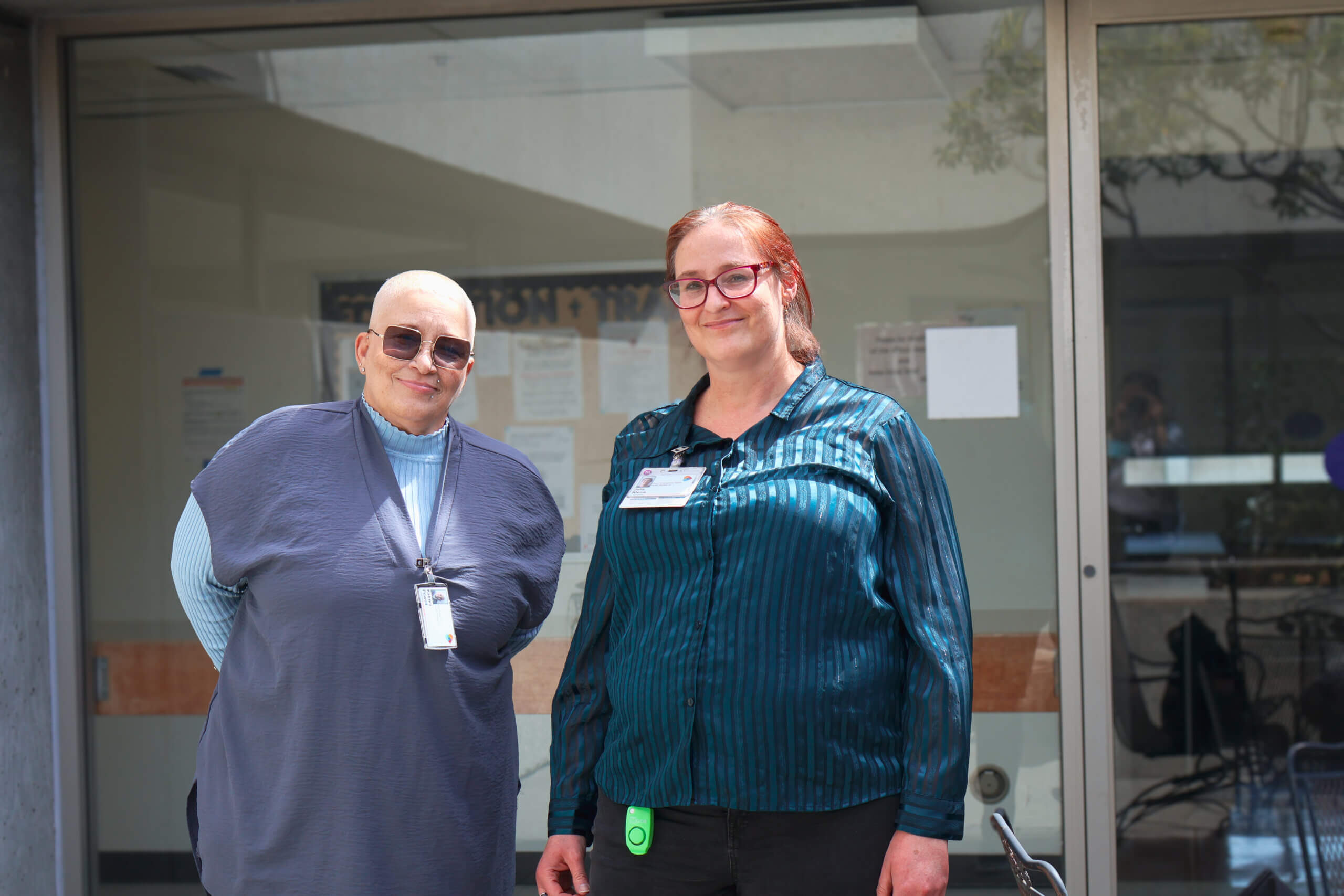
Zuckerberg San Francisco General Hospital and Trauma Center (ZSFG) plays a central role in the city’s ability to care for those experiencing mental and behavioral health challenges. With specialized units for both acute and ongoing mental health needs, ZSFG staff work with patients in a moment of crisis and help begin the healing process.
For many of our patients, the transition from psychiatric care to residential or community-based recovery can be a traumatic experience and difficult to navigate. With a wide array of social services spread across the city, successfully transitioning to a new program, facility, or shelter comes with challenges.

In 2019, the Transform Mental and Behavior Health Fund (TIMBHF) brought together mental and behavioral health programs and departments at ZSFG to better understand how new models of care benefit patients throughout the seven programs. It became apparent there was a real need to invest in a new type of role that focused on patients as they are discharged and begin the recovery journey – Patient Navigators.
Patient Navigators have been a part of the ZSFG model for a number of years, helping patients understand the larger network of social services available in the city, connect to partner organizations, and feel connected to members of their care team who may have a more diverse array of lived experiences.
Recently, the Department of Psychiatry hired two of these support specialists thanks to the TMBHF – one for the in-patient units and another for Psychiatric Emergency Services (PES). Julia and Katrina joined the team in 2023 and quickly became a critical piece of the puzzle. Working with patients at varying moments of recovery, each caters their practice to meet the needs of the patient before them.
For Julia, the moment a patient leaves PES, she sees her role at discharge as a time to connect, listen, and normalize what comes next. Taxi rides become a space to unwind, speak more freely, and share worries and anxieties about what comes next.
I say to my patients, ‘This is your moment.’ I offer what I can in resources, listen with empathy and understanding, and spend the time to ensure they feel understood.
As a part of the care team for longer-term hospitalizations, Katrina often gets the chance to develop a relationship with her patients during their stay, instilling trust that patients are not alone during discharge.
“I try to take the time to express what recovery is and what it may look like. By sharing parts of my story, with that clinical lens, I am usually able to get through in a different way than other people they’ve talked to.”
Both Patient Navigators have a deep understanding of the network of social services available throughout the Bay Area, with decades of experience in housing, peer counseling, public health, substance abuse, and harm reduction.
“I try to visit all the navigation centers and talk at length with the supervisors to get a sense of what each one is good for. What is this one all about? And finding out what else is happening there,” said Julia.
These small moments lead to bigger successes for some, whether it’s an emotional connection during an anxious moment or a smooth transition to the next level of care. But for each interaction, the Patient Navigator brings a different set of skills than other members of the team. And it’s this diversity of experience that can lead to a new trajectory.
“Patient Navigators sit in this unique space between hospitalization and the next phase of a patient’s journey to recovery,” said Annette Pinto, who shares oversight of the Patient Navigators in the Psychiatric Occupational Therapy Department. “Through being present, offering support and words of encouragement, the Patient Navigators are not only walking alongside patients as they navigate what’s next but also instilling a sense of hope.”
_______
Patient Navigators and other community-health-worker roles are becoming more prevalent in public health, relying on the expertise of community members to navigate the best way to care for patients. From the Emergency Department to Labor & Delivery to Family Medicine Clinics, Patient Navigators are shifting what health care means at ZSFG.